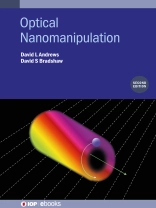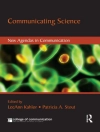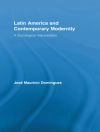The extended and updated second edition of this book expands its broad survey of the wide-ranging field of optical nanomanipulation. It aims to establish and differentiate the physical principles of this phenomenon, while providing a snapshot portrait of many of the most prominent and up-to-date applications. Primary emphasis is placed on cultivating an understanding of the mechanisms, all of which have a fundamental photonic origin, behind the operation of numerous related optical effects. To this end, the first few chapters introduce and develop core theory, focusing on both the role and physical significance of key parameters, and they reveal the detailed interplay between the key material and optical properties. Where appropriate, both classical and photonic (i.e. quantum) representations are discussed. Equations are purposely kept to a minimum; only a broad background in optical physics is assumed. The book is suitable for students and instructors alike.
Key Features
- Accessible to a broad audience
- Covers all kinds of optical manipulation at the nanoscale, an ever-expanding field
- Describes both theory and experiments, in an easy-to-understand style
- Where there is confusion between optical nanomanipulation mechanisms, connections and differences are clearly and comprehensibly identified
- Numerous original figures appear throughout the text, several of them exclusively provided by the leaders of the field, to enhance understanding
- Up-to-date bibliography and references are included, to assist those drawn to delve deeper into the subject.
Tabella dei contenuti
Preface
List of Symbols
1. Nanomanipulation: why optical methods are best
2. Key properties of the radiation
3. Optically induced mechanical forces
4. Laser cooling and trapping of atoms
5. Dielectric and metal nanoparticles: Rayleigh regime
6. Larger nanoparticles: Lorenz–Mie regime and beyond
7. Biological applications of optical force
8. Optical trapping arrays
9. Orbital angular momentum, optical vortices and torques
10. Structured light: particle steering, traction and optical lift
11. Optofluidics: lab-on-a-chip mixing and actuating flow
12. Vortex plasmons and light-induced ring currents
13. Optical binding
14. Photoresponsivity and light-driven nanomotors
15. Past, present and future
16. Bibliography
References
Circa l’autore
David S Bradshaw is an honorary research associate at the University of East Anglia in the UK. He graduated twice from the same university, first receiving a Master’s degree in chemical physics (which included a year at the University of Western Ontario, London, Canada) and then a Ph D in theoretical chemical physics. Overall, David has co-written 80 research papers, including book chapters, all based on molecular quantum electrodynamics. He has also created a website explaining the key physics in this theory. His long running interests include optical trapping, resonance energy transfer, optical binding and nonlinear optics. David is a Member of the Institute of Physics and the Royal Society of Chemistry.












